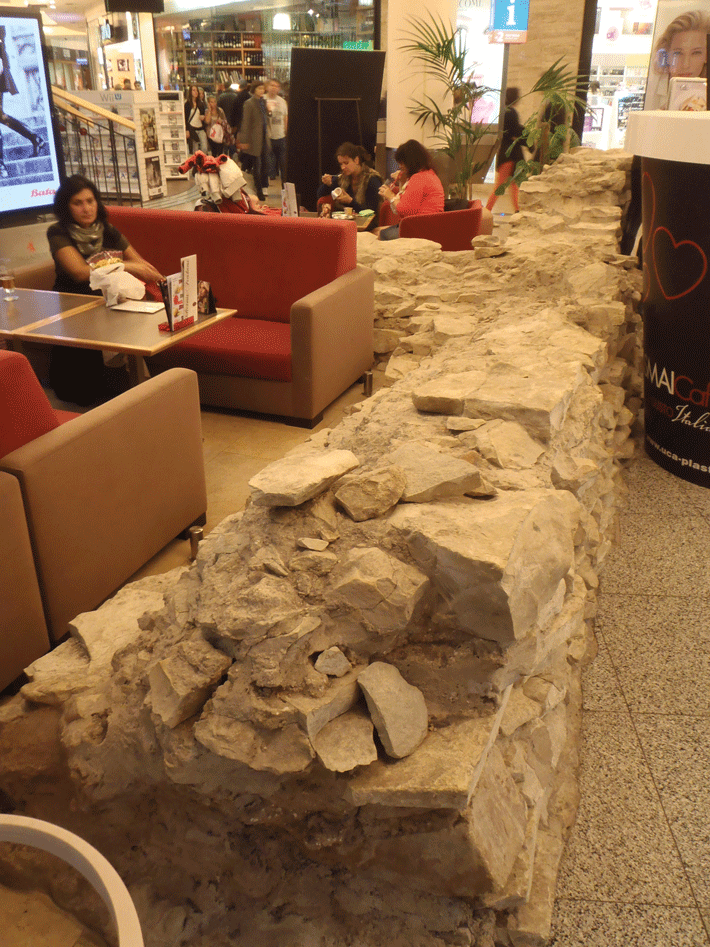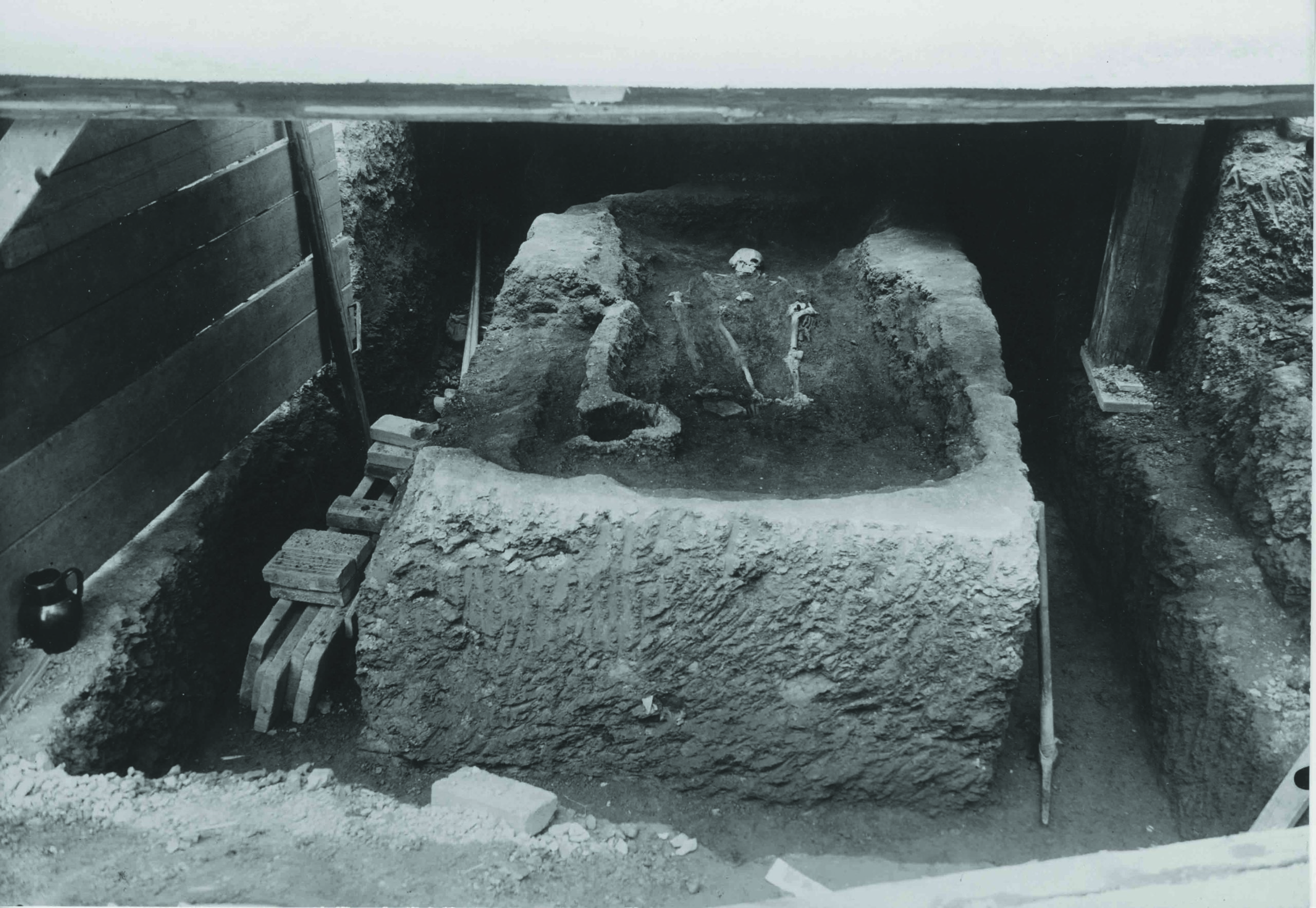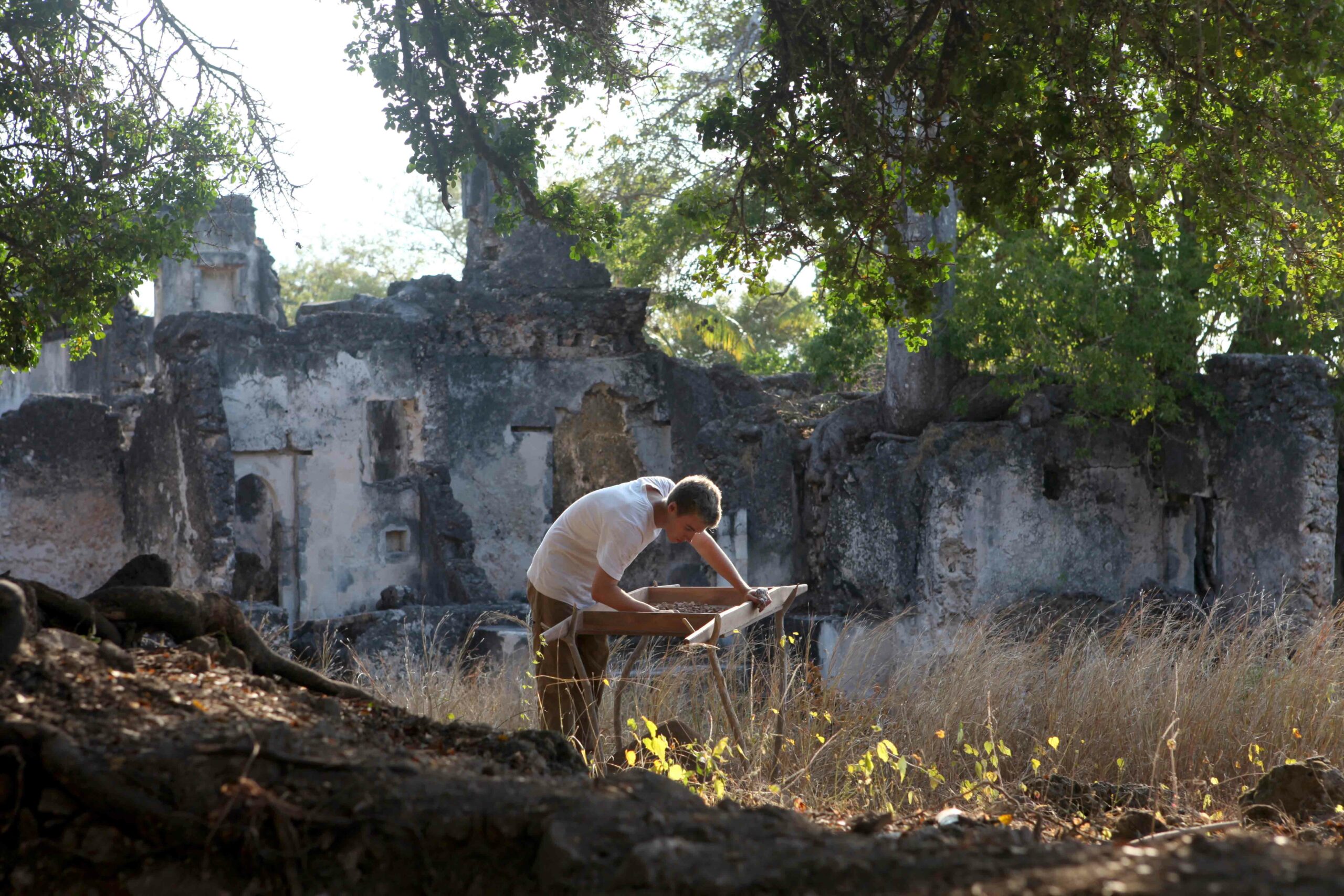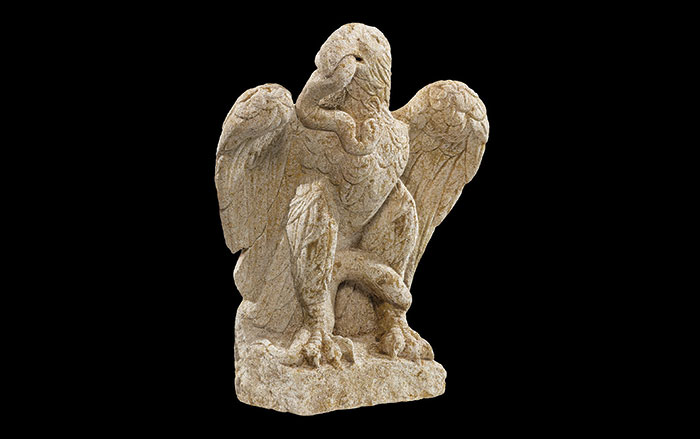
There are three main sections of historic Prague in the Czech Republic: Old Town, Lesser Town, and New Town. King Charles IV, the Holy Roman Emperor who moved his capital to Prague, designed New Town himself in 1348 on farmland east and south of the original city. Construction of a new mall from 2003 to 2006, and the rescue excavations that were part of it, revealed that there was even more to historic Prague. East of Old Town, the archaeologists working on the city’s largest-ever dig uncovered the remains of yet another urban center outside Old Town, dating to 150 years before Charles IV’s burst of urban planning. According to archaeologist Pavel Titz of Charles University, this occupation outside Old Town had a “sometimes quite splendid urban character.”

The site
Prior to the construction of the Palladium, now the Czech Republic’s largest shopping center, archaeologists found the foundations of twelfth-century structures that predate the construction of Old Town’s city walls. The remains consist primarily of three Romanesque structures, including what Titz refers to as a “palace,” one of only three such buildings in Prague. It had many rooms and several stories, along with a well-preserved cesspit and bits of flat window glass, possibly the oldest in the city. The foundations of the buildings were constructed of timber and masonry, the first evidence in Prague of such an approach to construction. The digs also turned up more than five million pieces of pottery, animal bone, glass, and ceramics. Following the excavation, archaeologists and developers were faced with the challenge of how to preserve the important remains. A visit to the Neoluxor bookstore reveals the solution: Amid the shelves of books for sale are the actual foundation and walls of the “palace” building, along with Romanesque column bases. Stonework, artifact cases, and informational signage pop up throughout the shopping experience. “The Palladium shows that it is possible to preserve and present archaeology in modern buildings,” says Titz.
While you’re there
The Palladium has more than 200 shops and 30 restaurants and cafés, but the rest of historic Prague is right on its doorstep. No visitor can miss Prague Castle in Lesser Town, the largest castle complex in the world; the ornate Astronomical Clock on the facade of Old Town Hall; and bustling Wenceslas Square in New Town, in addition to countless museums, churches, Jewish monuments, and architectural wonders both old and new.









